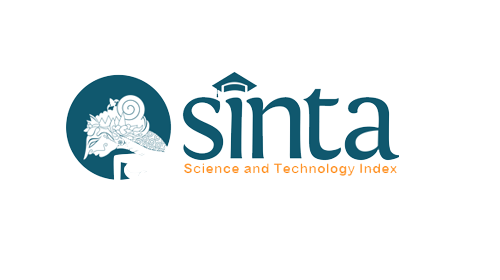Normal Birth Weight And Exclusive Breastfeeding Are The Causes Of Good Nutritional Status Of Toddlers At Kubutambahan 1 Primary Health Care
DOI:
https://doi.org/10.35568/healthcare.v6i1.4167Keywords:
Birth, Weight, Exclusive Breastfeeding, Nutritional StatusAbstract
Nutrition status was very important role in children's growth and development. A child's good nutritional status will influence the child's development and their growth, especially in the first 1000 days of birth. The aim of this research is to analyze the relationship between nutritional status and exclusive breastfeeding on the nutritional status of babies. The method of this research used analytical observational with a cross sectional research design with a sample size of 74 respondents. The sampling technique used was purposive. The research instrument used a questionnaire. Multivariate research results show that there is a significant relationship between the variables of exclusive breastfeeding and birth weight history and the baby's nutritional status with a p value <0.05. The conclusion is that the factors of exclusive breastfeeding and a history of the baby's birth weight increase the risk of the baby's nutritional status becoming good.
Downloads
References
Al-Rahmad, A., & Fadillah, I. (2016). Perkembangan Psikomotorik Bayi 6–9 Bulan berdasarkan Pemberian ASI Eksklusif. Aceh Nutrition Journal, 1(2), 99–104.
Alfred, E. (2017). .Hubungan Status Gizi Ibu Dengan Berat Dan Panjang Badan Bayi Baru Lahir Di Rumah Bersalin Widuri.
Alhamid, S. A., Carolin, B. T., & Lubis, R. (2021). Studi Mengenai Status Gizi Balita. Jurnal Kebidanan Malahayati, 7(1), 131–138. https://doi.org/10.33024/jkm.v7i1.3068
Andriani, R., Wismaningsih, E. R., & Indrasari, O. R. (2015). Hubungan Pemberian ASI Eksklusif dengan Kejadian Status Gizi Kurang pada BalitaUmur1-5 Tahun. Jurnal Wiyata, 2(1), 44–47. https://ojs.iik.ac.id/index.php/wiyata/article/view/35/35
Anggraeni, L. D., Toby, Y. R., & Rasmada, S. (2021). Analisis Asupan Zat Gizi Terhadap Status Gizi Balita. Faletehan Health Journal, 8(02), 92–101. https://doi.org/10.33746/fhj.v8i02.191
Badan Penelitian dan Pengembangan Kesehatan Kementerian Kesehatan RI. (2013). Hasil Rikesdas 2013.
Eidelman, A. ., & Schanler, R. . (2020). Breastfeeding and the use of human milk. Pediatric, 129(3). https://doi.org/https://doi.org/10.1542/peds.2011-3552
Fikawati, S., Syafiq, A., & Karima, K. (2015). Gizi Ibu dan Bayi. PT Raja Grafindo Persada.
Giri, M. K. W., Muliarta, I. W., & Wahyuni, N. D. S. (2013). Hubungan Pemberian ASI Eksklusif dengan Status Gizi Balita Usia 6-24 Bulan di Kampung Kajanan, Buleleng. Journal Sains Dan Teknologi, 2(1), 184–192.
Hamid, N. A., Hadju, V., Dachlan, D. M., Jafar, N., & Battung, S. (2020). Hubungan Pemberian Asi Eksklusif Dengan Status Gizi Baduta Usia 6-24 Bulan Di Desa Timbuseng Kabupaten Gowa. Jurnal Gizi Masyarakat Indonesia: The Journal of Indonesian Community Nutrition, 9(1), 51–62. https://doi.org/10.30597/jgmi.v9i1.10158
Kemenkes Rl. (2018). Riset Kesehatan Dasar: Riskesdas.
Rahayu, S., Djuhaeni, H., Nugraha, G. I., & Mulyo, G. E. (2019). Hubungan pengetahuan, sikap, perilaku dan karakteristik ibu tentang ASI eksklusif terhadap status gizi bayi. AcTion: Aceh Nutrition Journal, 4(1), 28. https://doi.org/10.30867/action.v4i1.149
Sari, A. N., & Maryanto, S. (2020). The Correlation Between Birth Length, Birth Weight and Exclusive Breastfeeding with The Incidence Of Stunting in Children Age Group 7-24 Months in Wonorejo Village, Pringapus District, Semarang Regency. Jurnal Gizi Dan Kesehatan, 12(27), 49–58. https://www.researchgate.net/publication/341726030
Supariasa, I. D. ., Bakri, B., & Fajar, I. (2012). Penilaian Status Gizi dan Makanan. EGC.
Susanty, M., Kartika, M., Hadju, V., & Alharini, S. (2012). Hubungan Pola Pemberian ASI dan MP ASI dengan Gizi Buruk pada Anak 6-24 Bulan di Kelurahan Pannampu Makassar. Jurnal Media Gizi Masyarakat Indonesia.
UNICEF. (2017). Paket Konseling : Pemberian Makan Bayi dan Anak.
Wahdah, S., Juffrie, M., & Huriyati, E. (2015). Faktor Risiko Kejadian Stunting Pada Anak Umur 6-36 Bulan Di Wilayah Pedalaman Kecamatan Silat Hulu, Kapuas Hulu, Kalimantan Barat. Jurnal Gizi Dan Dietetik Indinesia, 3(2), 119–130.
WHO. (2010). Pemberian Air Susu Ibu dan Menyusui Rekomendasi IDAI No : 002 / Rek / PP IDAI / XI / 2010.
WHO. (2018). World health statistics 2018: monitoring health for the SDGs, sustainable development goals.
Downloads
Published
Issue
Section
License
Copyright (c) 2024 The Author(s)

This work is licensed under a Creative Commons Attribution 4.0 International License.

















